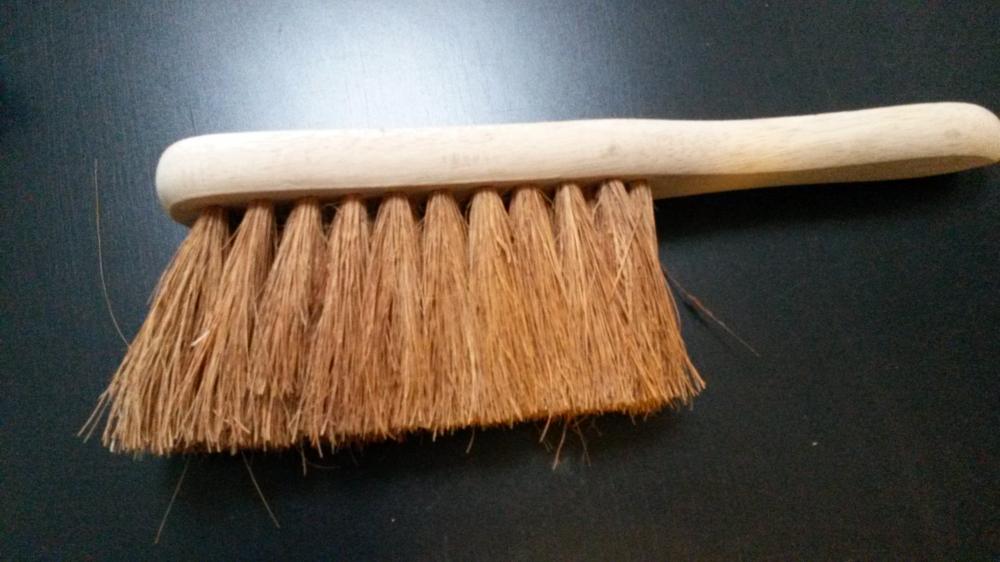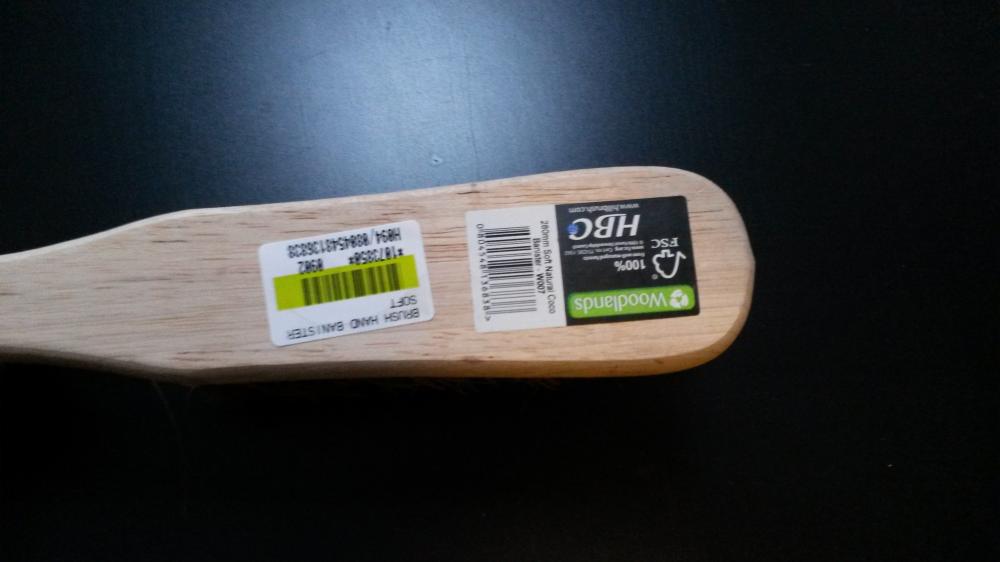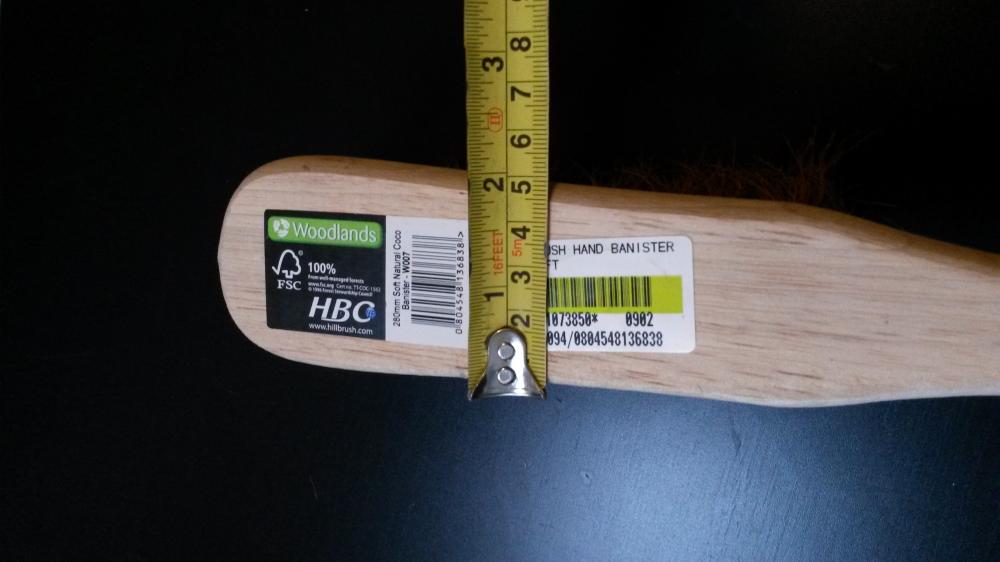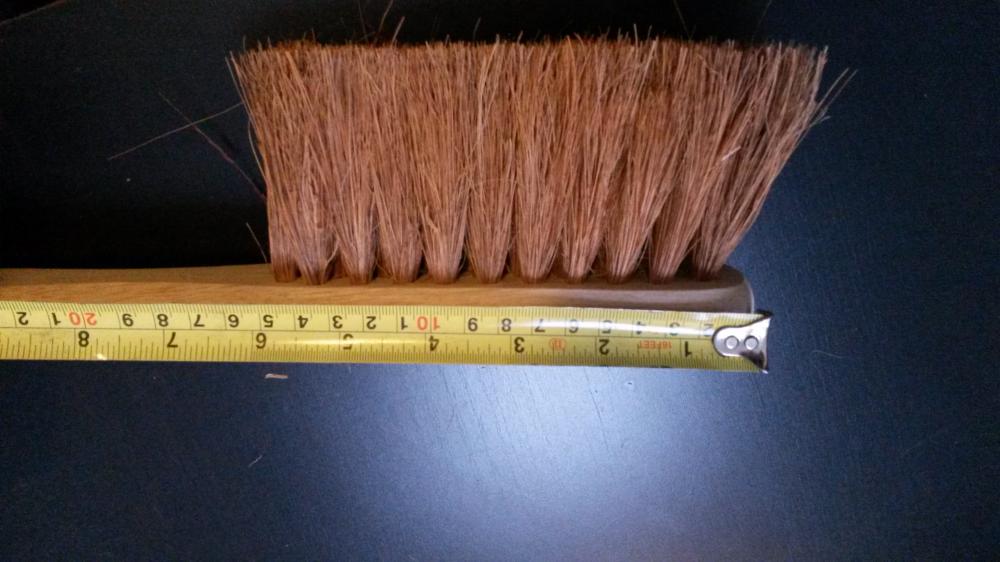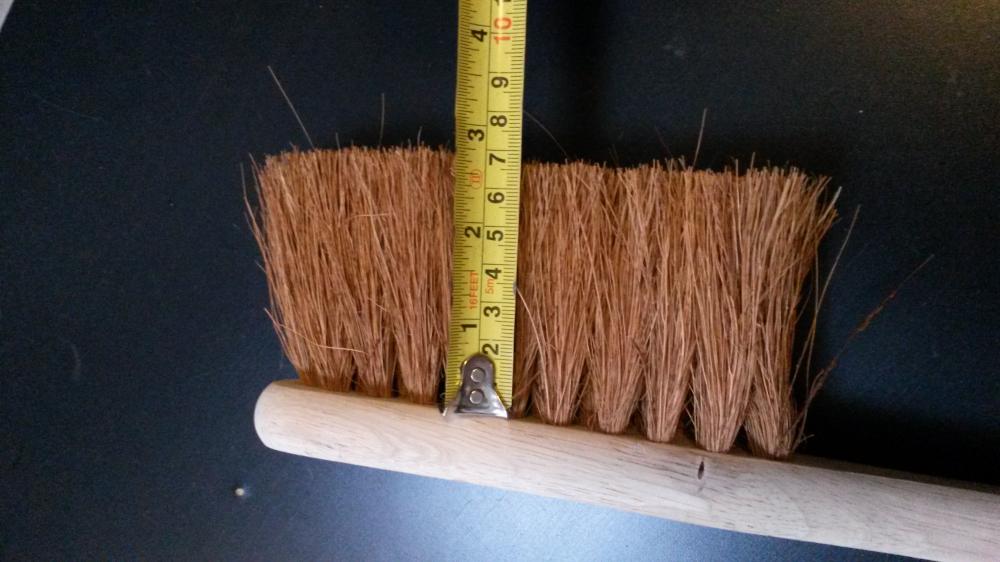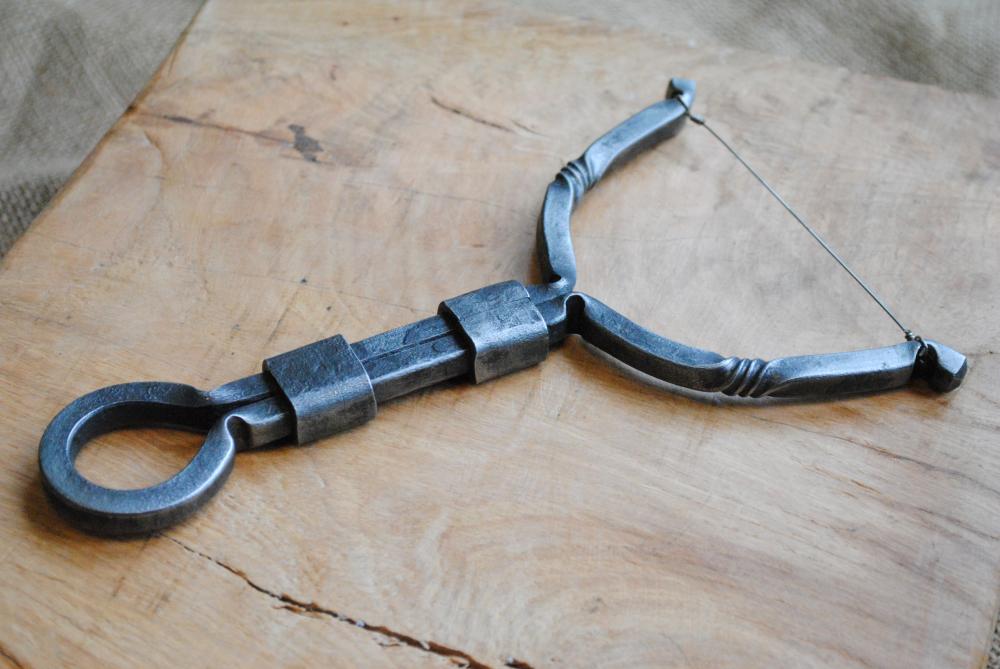-
Posts
1,075 -
Joined
-
Last visited
Content Type
Profiles
Forums
Articles
Gallery
Downloads
Events
Everything posted by Joel OF
-
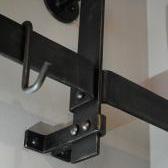
What does "tradtional" mean?
Joel OF replied to Joel OF's topic in Blacksmithing, General Discussion
Yikes, I hope people don't think I'm trying to stir things up or trying to hold smiths to account for how they describe their business, I'm just curious for opinion. My own hypocrisy is that I've put on my business cards "traditional and contemporary ironwork". If someone asked me to say specifically what I mean by that, I'd struggle, but my hope is that the public will interpret that to mean something along the lines of "I can make you a replacement strap hinge to match the other ones on your Tudor barn, or equally I can make you an iPad stand". -

What does "tradtional" mean?
Joel OF replied to Joel OF's topic in Blacksmithing, General Discussion
F.W.I.W, a master blacksmith who specializes in traditional English ironwork once told me with regards to spot heating a rivet head: "do it with the gas torch, just like they would have done in 1700, if they had them back then". -

Companion set brushes
Joel OF replied to Curly's topic in Blacksmiths and Metalworkers Association of the South West UK
Nice set Alan, typically unique, as much at home in an art gallery as a fireplace. These ones say 'soft natural coco(nut)" on them. The bristles are a good inch and a half dense, hopefully that's enough to catch all the ash. -

What does "tradtional" mean?
Joel OF replied to Joel OF's topic in Blacksmithing, General Discussion
That sounds quite neat and logical. Manual hacksaw VS power hacksaw. -
I hate myself for asking such an abstract, loose question, but it's something that's been niggling at the back of my mind for a while...I apologize in advance. What does the word "traditional" mean to you in relation to ironwork? I don't really know what the word means to me. Is it a point in history? When does "traditional" become "modern"? I'm forever reading on other smiths' websites "I use traditional and modern methods". I don't think anyone would dispute that punching a hole is a traditional method, but is drilling traditional? I think everyone would agree that a fish tail scroll growing in size according the to Fibonacci sequene is traditional, but what about the fluid, elongated curves of an Art Nouveua scroll, are they traditional? Are they only traditional to the Art Nouveau style, or has Art Nouveau been around long enouh for those types of scrolls to be accepted as generically traditional? At what point in time will MIG welding superecede forge welding as the traditional type of welds in architectural ironwork? I suppose at the centre of my questiion is - how long does something have to be around or be the norm before it becomes traditional?
-
The BBC show contained much more practical information than the show I took part in. I must have watched the BBC episode 30 times, long before I even saw an application form for the show I took part in. I had a funny "oh yeah" moment one day when filming, I was putting an awkward shaped bar into the fire and trying to do it quickly so as not to disturb the fire too much. It then occurred to me that I'd learned that from what Don said on the BBC show, and he standing right next to me.
-

Companion set brushes
Joel OF replied to Curly's topic in Blacksmiths and Metalworkers Association of the South West UK
I remembered this thread from a while ago... I've recently had a few enquiries about companion sets with brushes so set about trying to find some sensible sized brushes that could be adapted into fireplace brushes. Today I came across these small brushes with softish bristles in "Mole" countrystore. They also did a firmer bristled brush of the same size. Both types were £1.86. The irregular shape of the wood means they'd need a little bit of cosmetic tweaking but all in all I think they're a winner. Whenever I upload pics they appear rotated through 90 degrees but if you click on them they rotate back to the correct orientation. -
I must have tried half a dozen times to reply, but it never works... I took part in the follow up series to this BBC one. The series I took part had the same presenter and same master blacksmith mentor, but was a Channel 4 production called "Real Crafts". The difference was that the Real Crafts series was about amateurs / semi-pro crafts people looking to take things to the next stage. I asked Don what happened to the three from the Mastercrafts series, he said that Dominic went and did a 6 month apprenticeship with him up in York, then setup shop for himself. The lady went back to her day job as a museum assistant(?). I don't know about the other bloke. I also asked Don if the three of them really made everything themselves, he said they did. With regards to "how would you shape up?"...if there was no camera I'd assume that everyone here would do really well as I expect everyone is keen and eager to learn, so you'd lap up the 1-2-1 instruction. (Needless to say that co-ordination and natural ability would go a long way). However the thing you can't know is how well you'd do with a camera in your face all the time, watching your every mistake. The folks on the Mastercrafts series had the advantage of being complete novices so I doubt they would have felt the pressure of expectation, unlike the participants on the Real Crafts series who had in the back of their mind that that this could be good advertising and there's potential clients out there watching this so please, please, please don't mess up. Team that up with a camera in your face all the time, being constanty pulled away from your work to have mini interviews about "how it's going", having your every word monitored by clip microphones, having to constantly stop and re-do what you just did so the camera can get a better angle etc etc etc...that's all stuff that massively affects "how you shape up", but has nothing to do with smithing ability. Supposedly the budget on the Mastercrafts series was much larger than the budget on the Real Crafts series, and we really noticed it in terms of tools and workshop. That really affected how we "shaped up", but how much of that translates onto the screen, I don't know, It's TV land, a clever edit can make one thing look like something else completely.
-
Don't. I stayed at my folks' house last night as they live near to the Christmas market I had a pitch at yesterday. Sometime ago I forged a replacement strap hinge for their wonky garage door, and for some reason I decided at 8am that taking off the existing distorted strap hinge (complete with rusted nuts/bolts) and putting mine on would only take about half an hour and help my hangover. About 15 minutes in to the 2 hour job, as the drizzle was going down my back, I realized how swollen my glands are, how sore my head is and how my Dad didn't really have any of the right tools. At least the door opens now.
-
Yikes, I've inadvertently opened the door to 'thread pitch Hades'. Far too much for me to comprehend a.t.m through this fog of hangover & cold. I'm going to my workshop later, I shall bust out my trusty vernier and try to at least crack the case of what diameter a Number 3 allen key is, because from memory it doesn't look like 3mm. Thanks for the help folks.
-
Can anyone link me to a site that lists (in millimeters) bolt diameters according to the allen keys that do them up? I've Googled in vein. I.e a Number 3 allen key is for a .... diameter bolt. I need to replace a tiny bolt that does up with a Number 3 allen key, I can't measure the bolt diameter though as it's got mangled. Cheers me dears.
-
For about a year I've been meaning to experiment at making a back scratcher by using up all the little ends of welding rods I'm leftover with. My plan is to purposely weld them into a bar to make something resembling a rigid toothbrush, with softened tips. You could snip some up and try that?
-
Nice. Had a go at doing them on the arris?
-
For the sake of this thread let's rule out the use of flat bar and focus on round or square bar of 10mm (3/8") or 12mm (1/2") diameter - stock sizes I expect are commonly used. How do you forge dosmestic fireplace tong hinges and why? I'm talking about tongs that have 2 arms and either operate one handed, (with the hinge near the hand, typically with loops for fingers and thumb), or tongs that operate two handed with the hinge nearer the logs/coal end, (similar to blacksmith's workshop tongs). I am confident at forging hinges and I'm not asking for a 'how to', I'm just curious as to people's preferences.
-
Great stuff. I've tried thinning my beeswax mix in the past by adding more turps but in a matter of days the turps sinks & separates leaving the beeswax to firm up at the top, which is really frustrating! I've located your recipe so I'll Delia Smith a pot of that up. Through Googleing the ingredients I've come across a company called Kerax that do a lot of waxes & have the required waxes listed on their site. With any luck they can point me towards a food safe wax I can apply cold as I'm bored of baking vegetable oil into my food items. Cheers again.
-
Cheers, I'll look up your old post. I tried picking up a pot last time I was in the Fire and Iron gallery but Lucy said they had just sold out! I'd pretty much already come to the conclusion myself but the recent articles on finishing in the BABA mag cemented it for me that I need to put more time into a high quality finish...then up my prices accordingly. Off the back of reading about Peter Parkinson's pickeling then graphite based finish I picked up some Liberon "Iron Paste" to have an experiment with, but haven't got round to it. Would R'ance wax be easy to work into the fullered folds in my cheese cutters? That's the sort of P.I.T.A area I get annoyed with at the minute. The only way I can get my beeswax/turps/linseed mix into folds like that is by poking/scrubbing with a toothbrush which inevitably gets clogged up, goes stiff, and becomes useless. (Before anyone says they should have a food safe oil finish, I have spoken to the Food Standards Authority about food finishes and it's only the areas that touch food that need to be "food safe". That's 316 stainless wire, so ner ner nee ner ner). Does that last okay on metal? I had a look at a tin of it recently and it seemed to be a wood finish.
-
Thanks folks. That process and product sounds exactly like what I'm after, Alan. I'm fed up with dirty, waxy, sticky residues on my work I battle to wipe off so I've recently started pickleing some of my work in vinegar then burnishing it on a bench grinder wire wheel, but I'm thinking of investing in a blast cabinet to make the process dry & less messy.
-
Is anyone aware of a self hardening colourless (or as colourless as possible) finish that can be applied by brush and does not require heat (from the forge or oven) to make it set? I'm ruling out vegetable oil and the like because they require heat, I want something that can be done 'cold' at room temperature. It would be a finish for indoor items so it doesn't have to be completely weatherproof. I don't want something that will chip or look shiney, I expect I'm after something water based that has a bit of flex and is runny enough to get into all the little nooks and crannies, e.g inbetween rams horns on the top of their heads. I'm preferably looking for a single pack product that won't go off in a tub because I've added a hardening agent, something that I can brush on then leave, I don't want something that needs to have excess residue buffed off. Doesn't have to be food safe. I don't want to use any spray products for a variety of reasons. This can be an off-the-shelf product or something I can cook up at home, but the usual beeswax - turps - linseed oil mix is not what I'm after. Reading that back it sounds a bit grumpy, I don't mean it to, I'm just trying to be clear and concise about what I'm looking for. Cheers in advance!
-
Well I rang my supplier, Parker Steel, and also IS&G yesterday, it seems that S275 is the only available type in solid bar.
-
I haven't. I've bought plenty of discs, rivets, spheres etc off them but haven't used them for regular stock, I'll have a butchers, cheers.
-
Yeah I remember that video, I like his videos. Yeah I'd imagine that seam line would require a bit of attention as it'd be a very hard 90 degree shoulder. LOL.
-
At the risk of sounding a bit Oliver Twist, I don't think I can specify what variant of mild steel my supplier delivers to me, I think you get what you're given. Although I know very little about the steel business my assumption is that most of the big suppliers will get their steel from a variety of mills around Europe, then it all gets jumbled up on their racks. Perhaps I should be a bit more picky about who I buy from.
-
I love modern concepts like that, though aesthetically I prefer how it looks in pics 5/6 than how it ends up.
-
I seem to be getting the hang of managing this new fire. All in all I guess the thing that's been making me scratch my head is how can side blast fires get away with being so shallow in comparrison to bottom blast fires? A couple years back when I researched how to make a bottom blast forge I constantly heard to make the pot 4" deep. I guess that extra depth is because in a bottom blast your work is placed in the path of the air, so you need more fuel to soak up some of that air, but with a side blast your work is above the path of the air meaning your work doesn't get so oxidized???
-
How does the poor quality of mild steel nowadays affect your working methods, or your choice of products to make?

